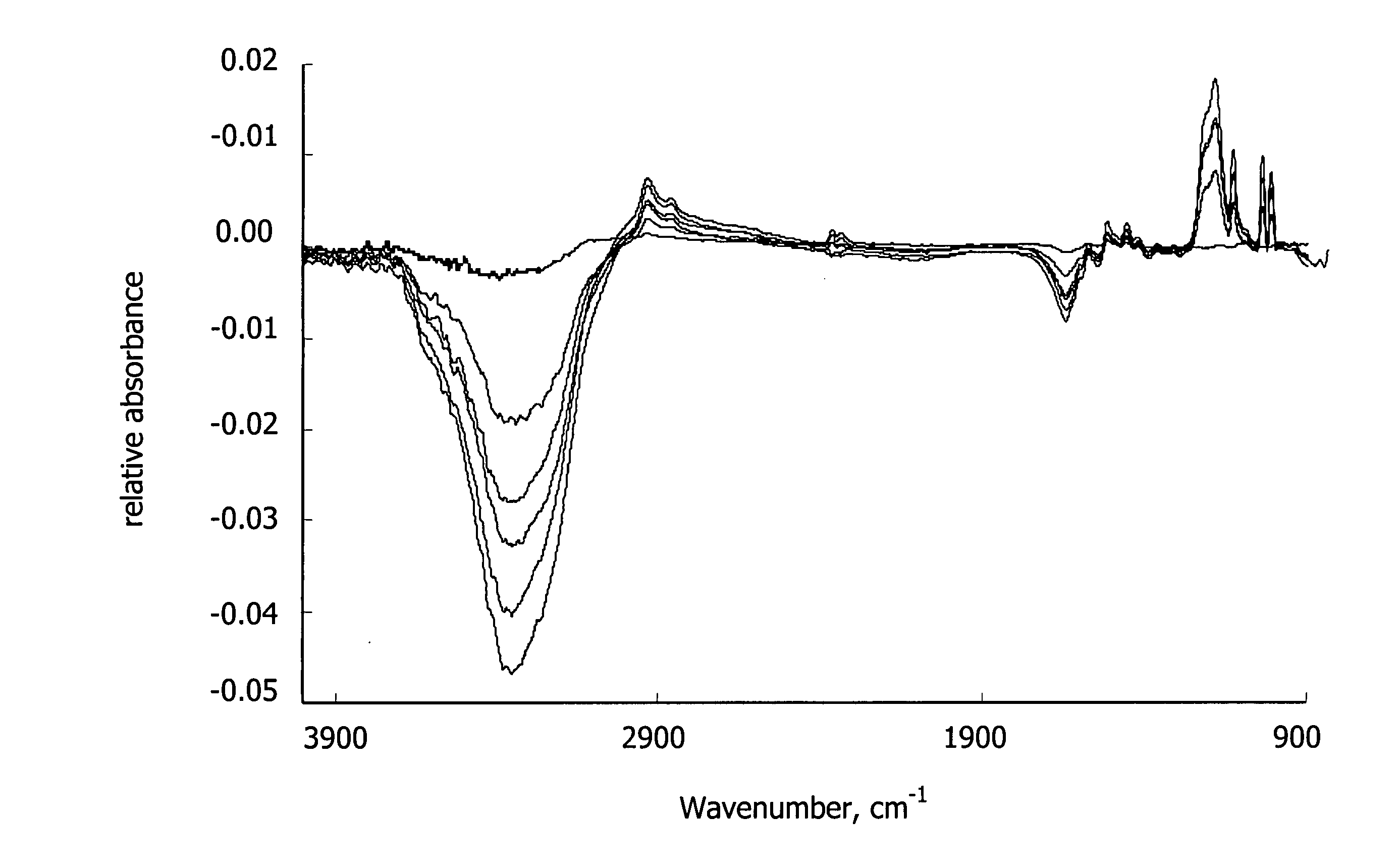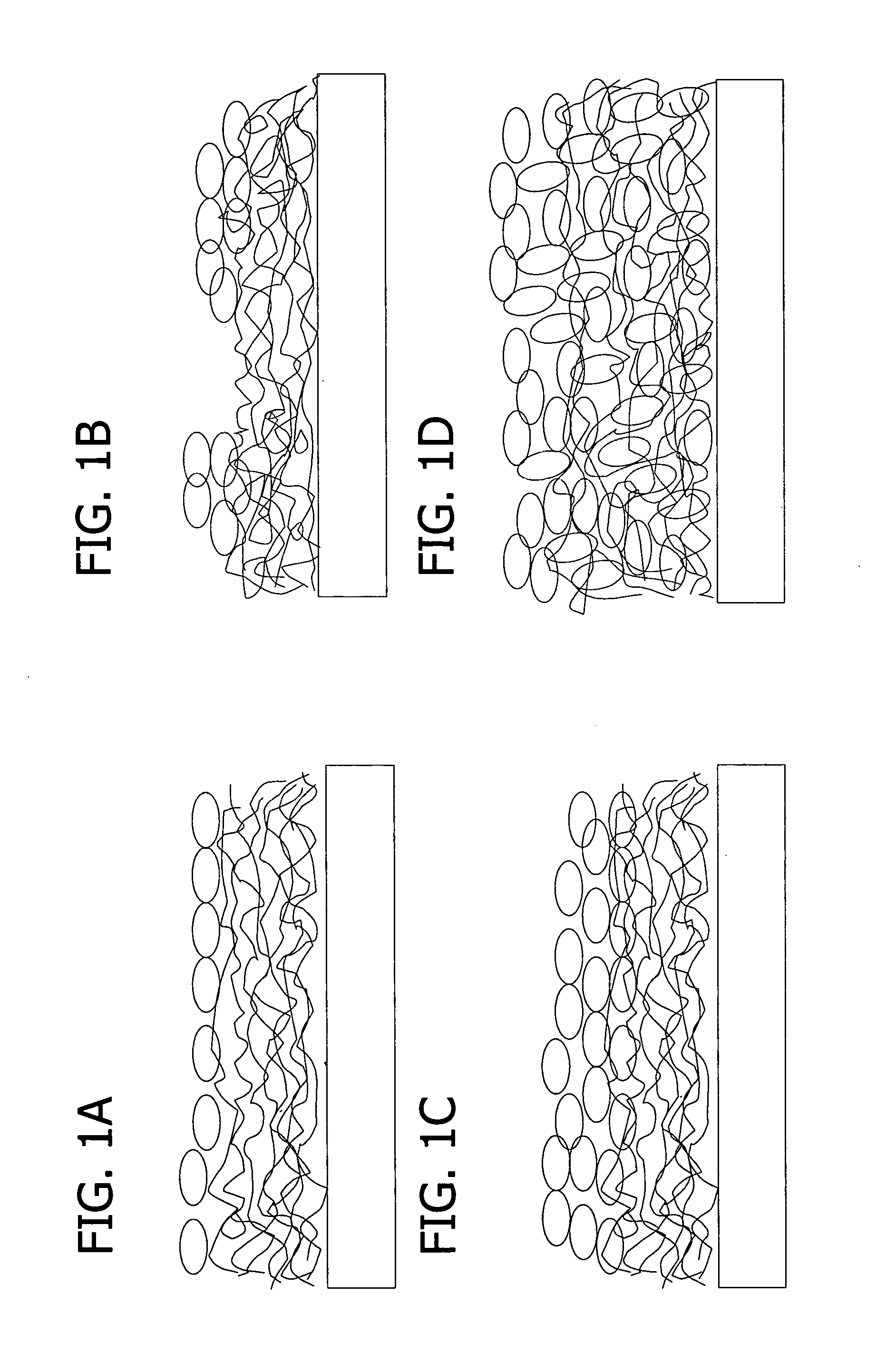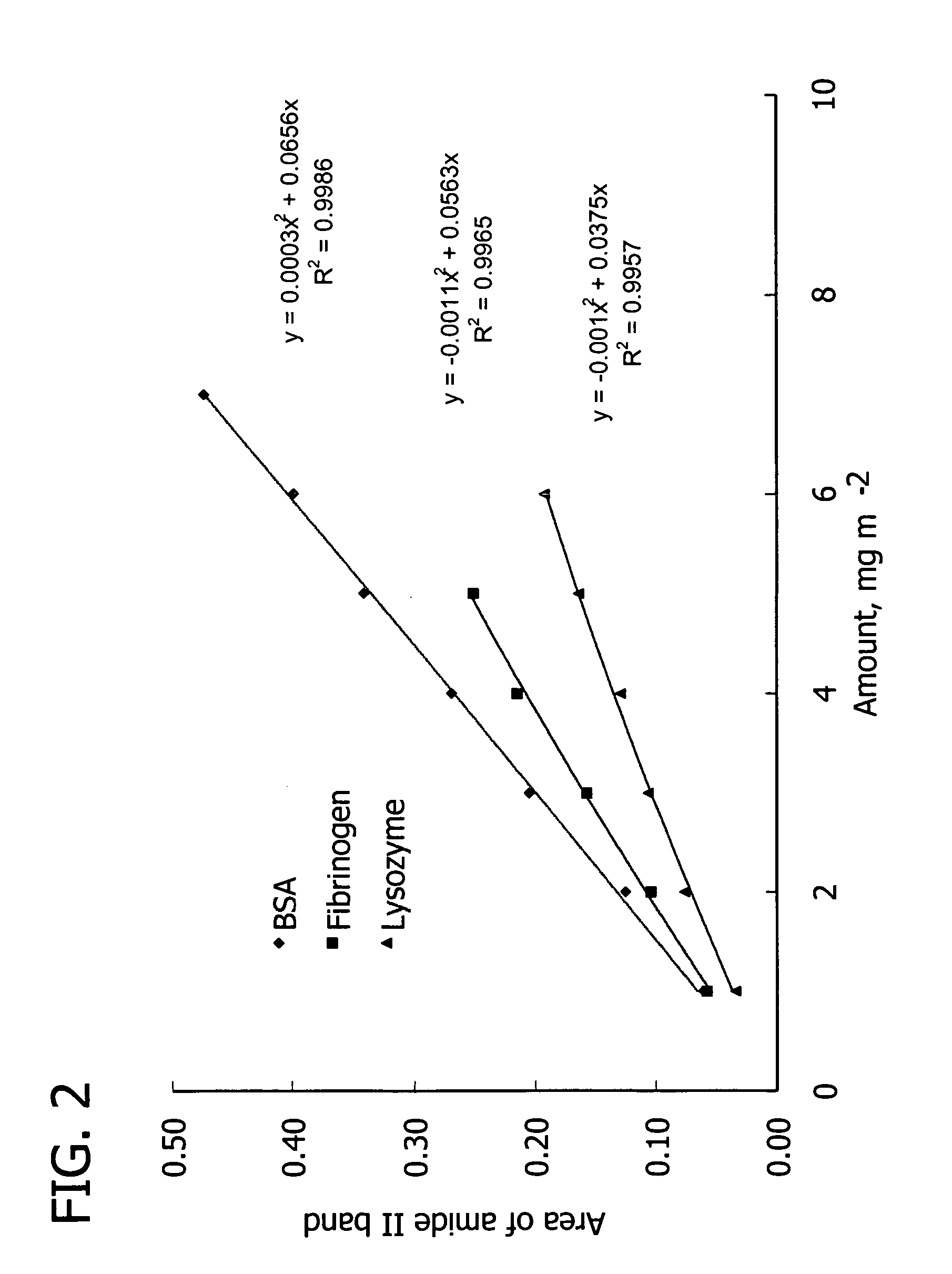Thin films for controlled protein interaction
a protein interaction and thin film technology, applied in the field of ultrathin polymeric membranes, can solve the problems of protein denature, protein instability, and added time and inconvenience in the purification process
- Summary
- Abstract
- Description
- Claims
- Application Information
AI Technical Summary
Problems solved by technology
Method used
Image
Examples
example 1
Polyelectrolytes for Building PEMUs
[0106] Refer back to Table I for the structures of polyelectrolytes for use in building PEMUS. Poly(styrenesulfonic acid), PSS (molecular weight, MW ˜7×104), poly(diallyldimethylammonium chloride), PDADMAC (MW ˜3×105), poly(allylamine hydrochloride), PAH (MW ˜7×104) and poly(acrylic acid), PAA (MW ˜24×104) was used as received from Aldrich. Poly(N-methyl-2-vinyl pyridinium bromide), PM2VP (MW ˜5×104, about 90% quaternized) was used as received from Polysciences Inc. Poly(N-methyl-2-vinyl pyridinium iodide-block-ethylene oxide), PM2VP-b-PEO (PM2VP block 86% quarternized, respective block molecular weights 56,500:5900 Mw / Mn=1.08) was used as received from Polymer Source Inc. Random copolymer PDADMA-co-poly(acrylic acid), PAA (mol % of acrylic acid repeat unit, AA, is 36%; Mw ˜2×105) was used as received from Calgon Merquat® 281.
[0107] When the random copolymer PDADMA-co-PAA was used in making multilayer, in order to keep the stability of the PEMUs,...
example 2
Proteins Absorbed into and Released from PEMUs
[0110] Table V lists proteins used in the following examples to show the efficacy of the PEMUs of the present invention. The table includes the protein's pI and its charge at physiological pH 7.4. Bovine serum albumin (BSA) (fraction V powder, approx. 99%), fibrinogen (fraction I, type I-S from bovine plasma), lysozyme (from chicken egg white), pepsin (from porcine gastric mucosa), and α-chymotrypsinogen A (from bovine pancreas) were obtained from Sigma. For experiments requiring fluorescent probes, fluorescein isothiocyanate-albumin (FITC-albumin) from Sigma were used. Proteins were dissolved in TRIS buffer (pH 7.4) with a protein concentration of 1.0 mg / mL, or protein solutions were prepared by dissolving in 10 mM phosphate buffer to 1.0 mg / mL. This protein bulk concentration lies in the plateau region of the adsorption isotherm. Buffer ionic strength was adjusted by addition of sodium chloride. Protein solutions were filtered prior t...
example 3
Quantitative and Qualitative Methods of Analysis
[0111] The following are experimental methods for qualitative and quantitative analysis of PEMUs and thin film / charged molecule interactions. These methods are employed in the examples which follow.
[0112] Polyelectrolyte Multilayers on Si wafers. Polymers were deposited on silicon wafers (Si, 0.5 mm thick, 1 inch diameter, undoped, polished on one side, Topsil Inc.) that were cleaned in 70% H2SO4 (conc.) / 30% H2O2(aq) (“piranha:” caution, piranha is a strong oxidizer and should not be stored in closed containers) then in hot H2O2 / ammonia / water, 1:1:7 vol / vol, rinsed in water and blown dry with a stream of nitrogen. Sequential adsorption of polyelectrolytes was performed by hand dipping, or with the aid of a robot (nanoStrata Inc.), where the exposure time for the two polymers may be 5 minutes with three rinses of fresh distilled water, 1 minute each, between.
[0113] ATR-FTIR. FTIR (Nicolet Nexus 470 FTIR) was used in attenuated total ...
PUM
| Property | Measurement | Unit |
|---|---|---|
| pKa | aaaaa | aaaaa |
| pKa | aaaaa | aaaaa |
| thick | aaaaa | aaaaa |
Abstract
Description
Claims
Application Information
 Login to View More
Login to View More - R&D
- Intellectual Property
- Life Sciences
- Materials
- Tech Scout
- Unparalleled Data Quality
- Higher Quality Content
- 60% Fewer Hallucinations
Browse by: Latest US Patents, China's latest patents, Technical Efficacy Thesaurus, Application Domain, Technology Topic, Popular Technical Reports.
© 2025 PatSnap. All rights reserved.Legal|Privacy policy|Modern Slavery Act Transparency Statement|Sitemap|About US| Contact US: help@patsnap.com



